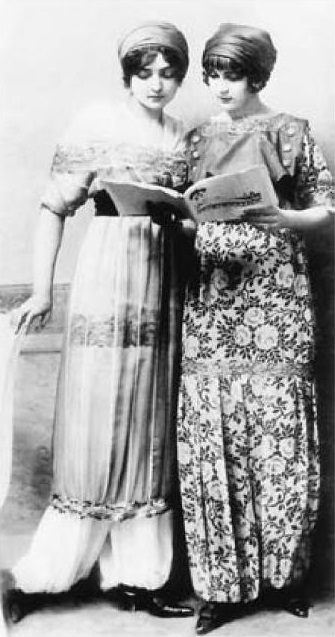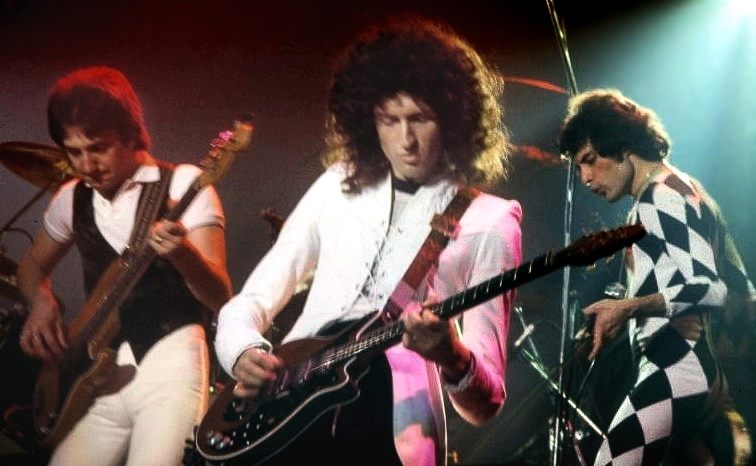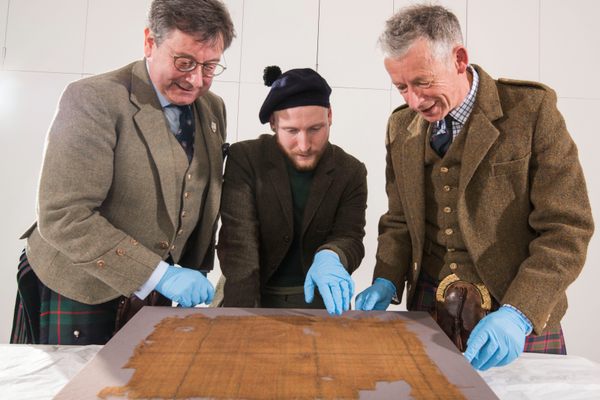Jumpsuits: Heralding The End Of Fashion For A Century

White jumpsuits, military-style. (Photo: Library of Congress)
The jumpsuit has two faces. One comes from world of culture and fashion, everything from Elvis in Vegas to Janelle Monae at the Met Gala. Sleek, bedazzled, garish, constructed from rubber or leather, adorned with everything from feathers to bullets, it is made for anything but utility.
The other image comes from the future. It’s the outfit of Star Trek: The Next Generation, where every citizen has his or her place in the machine, signaled to everyone else by a color-coded jumpsuit uniform. It simultaneously evokes a forward-looking society that’s moved beyond superficial concerns, and a utilitarian past of factories and manual labor. It is practical, purposeful, and completely post-trend. The same uni-garment is at once the future of fashion and the future of non-fashion.
Both faces of the jumpsuit, which at its simplest, is a top and pants connected into one garment, is experiencing a small renaissance. Search “jumpsuit” or “romper” on Modcloth or Anthropologie and the page is populated with dozens of options, and far more than they would have been even a couple of years ago. But unlike bellbottoms or crop tops, every jumpsuit revival brings the promise of something more. “A lot of designers considered the jumpsuit the ultimate evolution of modern fashion,” says Cassandra Gero, Assistant Conservator at the MET’s Costume Institute.
The jumpsuit isn’t just fashion. It also suggests the end of fashion–one garment for all. Is that why it can never stay in style?

Models wearing Paul Poiret’s early designs. (Photo: Public Domain/WikiCommons)
The apparel got its name from parachute jumpers, who would wear durable, one-piece coveralls while launching themselves out of planes. It seems like those would have come first, and fashion would have been inspired by the practical design, but according to Gero, the jumpsuit-as-practical-uniform and jumpsuit-as-fashion-item actually developed around the same time. In 1913, the H.D. Lee Mercantile Company (the company that would eventually become Lee Jeans) released the Union-All, a one-piece denim cover up intended for work. But at the same time, avant-garde designers were inspired by the silhouette, and what it could mean for fashion’s future.
Across the ocean, in 1911, French designer Paul Poiret designed a jumpsuit for women called “the pantaloon gown,” says Gero, basically a dress with loose pants instead of a skirt. “It was very ‘Oriental’ inspired,” says Gero, evoking “harem pants” and similar shapes. Poiret wanted clothes to be modern, elegantly draped, and easy to move in, and is often credited with helping free women from the corset. The pantaloons were scandalous, with couture stalwart Jean-Philipe Worth calling them “vulgar, wicked and ugly!” But it quickly became not all that scandalous. “I think that women have been wearing dresses for centuries, so this one piece garment is not that much of a stretch,” says Gero. “You just bifurcated the legs.”

Utilitarian jumpsuits: WAVES (Women Accepted for Volunteer Emergency Service) Florence Johnson and Rosamund Small were the first two women to qualify as instructors on electrically operated 50-caliber machine gun turrets. (Photo: NARA)
Poiret’s design was pure fashion, but as the decade progressed more designers took inspiration from outfits like the Union-All, using fashion to create a garment that might end the need for fashion. In 1919, Italian designer Thayaht designed the TuTa, a T-shaped garment that he envisioned could be a universal, democratic uniform. In 1920 he published the pattern in La Nazione newspaper, so everyone could make them for themselves. In 1923, Russian artist and designer Rodchenko designed a similar garment, which Vogue called “the revolutionary garment of the new man.” The jumpsuit married fashion, art and politics. It was a collectivist, utilitarian garment born out of the formation of the USSR. It was clothing that spoke of a revolution. With everyone in a jumpsuit, we celebrate “no more the individual, but the value of the community, of the mass.”
It didn’t quite catch on that way. For decades, jumpsuits remained utilitarian, outfitting racecar drivers and parachute jumpers. But that changed–for a while–in the middle of the 20th century. “In the ‘50s you’d see them a little in fashion, with youth culture, but the ‘60s is really where it blew up,” says Gero. The ‘60s is where everything blew up, really. People were rejecting couture and the concept of top-down fashion in general, and were looking for new ways to express themselves. The jumpsuit was a natural product of that fashion rejection, inspired by the same ideas of the avant-garde 1910s. It was anti-fashion, and it embraced everyone.
The 1960s also had one huge inspiration: space. Designers were enchanted with Space Age fabrics like nylon, rayon and polyester, which were easy to turn into body-hugging jumpsuits. They were also fixated on the possibility of creating fashion’s future. The jumpsuit could still be the uniform of the working man, only now he might be working on the moon. But even in those science-fiction fantasies, the idea of doing away with fashion altogether permeated the designs. “Wearing one of those utilitarian jumpsuits can be considered anti-fashion, because you’re rejecting the ever changing whim of fashion. You’re putting on a simple, democratic, one piece outfit like a uniform,” says Gero. “But then if you think of it as a futuristic jumpsuit, they tap into that same idea, the same rejection of fashion. Some designers predicted that in the future we’d all be too busy working on more important things to think about fashion, so we’d all adopt the jumpsuit as a uniform. These ideas of modernity and utility intertwine in this whole garment.”
There was also a certain genderless quality to the jumpsuit. The future promised the destruction of barriers between Earth and space, between fashion and anti-fashion, so why not between men and women? The idea of one ungendered uniform for all was enticing to the counterculture of the ‘60s and beyond. The jumpsuit is the perfect vehicle for androgyny, which had always existed but became aesthetically dominant in the 1970s, most obviously in popular music, with artists like Mick Jagger and David Bowie. Gero says the ‘70s were a fashion free-for-all— “people were wearing hot pants to work.” The jumpsuit was not just modern, but in the most suggestive terms, easy. It’s one piece, simple to put on, and just as simple to take off. “There’s this idea if you’re wearing a jumpsuit that zips all the way down the front…you want to unzip it,” says Gero.

Jumpsuits and hair: Queen performing in Brighton in 1977, with Freddie Mercury in a jumpsuit. (Photo: Carl Lender/WikiCommons CC BY-SA 3.0)
By this point, the jumpsuit has moved past being anti-fashion. You can’t look at a sequin-covered David Bowie number, or watch the internet break after Solange wears a jumpsuit to her wedding, and say it’s still purely something for the everyman, whether on Earth or in space. But at the same time, the jumpsuit is hewing to its utilitarian roots. Coveralls are still worn in factories, and nobody is wearing dresses on the International Space Station. It is that conflict between fashion and anti-fashion, future and past, practicality and ostentatiousness, that keeps the jumpsuit so intriguing.
Ultimately, the jumpsuit’s Achilles Heel might be sewn into both its futuristic and its decorative styles. “I would love if it became the future of fashion, but I don’t think that’s going to happen,” says Gero. The genderless, often baggy uniform is difficult enough to fit on all the body types that it’s intended for, and the fashionable sleek versions are even harder. (This is to say nothing about its real horror: the difficulty in removing the thing for bathroom visits.) But also, we don’t want the end of fashion, and probably never did. We want the jumpsuits that make us stand out, not make us blend in.










Follow us on Twitter to get the latest on the world's hidden wonders.
Like us on Facebook to get the latest on the world's hidden wonders.
Follow us on Twitter Like us on Facebook